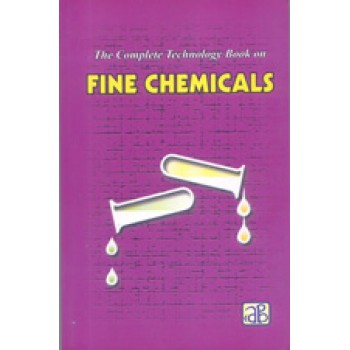The Complete Technology Book on Fine Chemicals
| Price: | Rs.1,100.00 |
Detail Of The Complete Technology Book on Fine Chemicals
| ISBN | 8178330563 |
| Pages | 586 |
| Language: | English |
| Product Code: | 1 |
| Size(in cm): | 21*13.5 cm |
| Weight(in grams): | 500(approx) |
Description:
Fine chemicals are the chemicals which are produced in comparatively small quantities and in relatively pure state. In chemical technology, a distinction is made between bulk chemicals, which are produced in massive quantities by standardized reactions, and fine chemicals, which are custom produced in smaller quantities for special uses. There is a very large number of fine chemicals that are produced, and thus the chemistries of producing them need to be flexible, whereas the atom economy is not as critical as for bulk chemicals. Some of the examples of fine chemicals are acetazolamide, albendazole, amitriptyline, azithromycin, benzothiazide, captopril, carbamazepine, chloroquine, etc. Owing to the small volume and often changing chemistry, fine chemicals production is more expensive, generates more waste and requires a higher research investment per kilogram. However, fine chemicals are produced in industrial quantities unlike research chemicals, which are produced only in the laboratory. Fine chemicals correspond to a distinct segment of the chemical industry, including low tonnage molecules (typically 10 to 20 Kt.). Pharmaceutical and Biological products, perfumes, photographic chemicals and electronic grade reagents are examples of fine chemicals. High purity reagents (99.999999% pure) are also classified as fine chemicals. Globally, the fine chemicals industry continues to be very fragmented in spite of some consolidation, partly due to the limited impact of economy of scale on the business. While, fine chemicals do offer limited albeit real opportunities for product differentiation, in contrast to commodity chemicals, they are unlike specialities. While, fine chemicals do offer limited albeit real opportunities for product differentiation, in contrast to commodity chemicals, they are unlike specialities, which offer much larger scope for standing out due to an enhanced contribution of technical services and application know how.
This book is a comprehensive reference on one of the most exciting and challenging segments of the modern chemical industry, and a practical guide for developing and succeeding in the multibillion fine chemicals business. Some fundamentals of this book are synonyms, molecular formula and other properties of fine chemicals like albendazole, amitriptyline, azithromycin, benzothiazide, captopril, carbamazepine, chloroquine, etc. This book is an invaluable resource for technologists, professionals and those who want to venture in this field.
Reviews (0)
Write a review
Your Name:Your Review:
Note: HTML is not translated!
Rating: Bad Good
Enter the code in the box below:



 |
| 